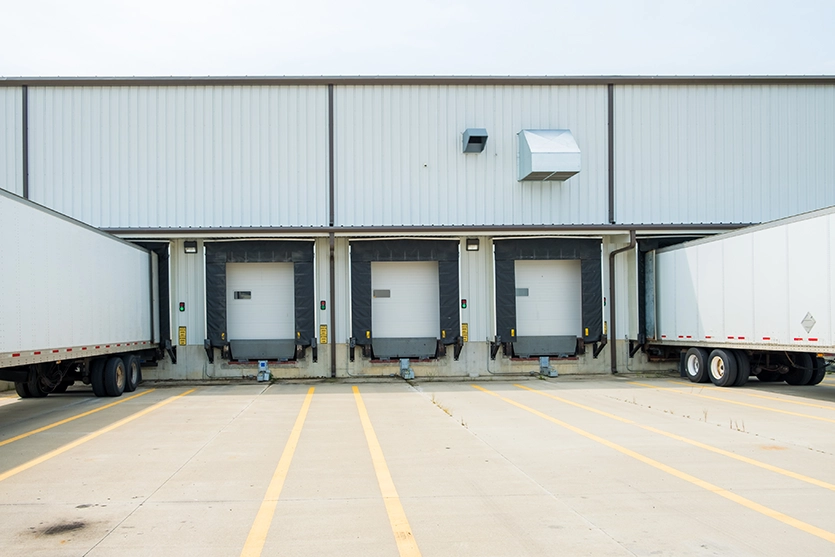Speed and efficiency are essential for success in today’s logistics landscape. Whether you’re managing retail replenishment or overseeing 3PL eCommerce fulfillment, optimizing the movement of goods through the supply chain is key. That’s where cross-docking comes in — a method designed to minimize delays, reduce warehousing costs, and enhance customer satisfaction through streamlined distribution.
So, what is cross-docking? At its core, cross-docking is a logistics strategy where products are transferred directly from an inbound shipment to an outbound truck with little or no storage in between. This process typically takes place at a cross-docking terminal, a facility specifically designed to handle such rapid transitions. Unlike traditional warehousing models, where goods may be stored for days or weeks, cross-docking accelerates product movement and reduces touchpoints, making it a cornerstone of supply chain efficiency.
Industries such as retail, grocery, automotive, and pharmaceuticals — where timing and inventory turnover are critical — are increasingly adopting cross-docking services to stay ahead of the curve. For these businesses, the benefits are clear: reduced inventory holding, faster fulfillment, and leaner operations.
The Cross-docking Process Explained
The cross-docking process follows a tightly controlled workflow that demands coordination and real-time communication across supply chain partners. Here’s how it typically unfolds:
- Inbound shipment arrives at the facility, often from suppliers, manufacturers, or distribution centers.
- Products are immediately offloaded, sorted, and verified for quantity and condition.
- Based on destination or customer orders, goods are routed for quick transfer onto an outbound shipment.
This entire cycle may occur within a few hours — sometimes faster — depending on the overall efficiency of the operation. The layout of a cross-docking warehouse is central to its success; these facilities are configured to support a fast product flow, typically using a “flow-through” design where inbound docks are positioned directly across from outbound docks.
Effective cross-docking requires detailed scheduling and technology integration. For example, advanced Warehouse Management Systems (WMS) and RFID technologies ensure accurate real-time tracking, while logistics software aligns delivery windows to prevent delays. As a hiccup in timing can result in congestion, delayed deliveries, or costly re-handling, precision and collaboration are of the utmost importance.
Key Benefits of Cross-docking
The recent rise of cross-docking can be attributed to its wide-ranging benefits. Businesses that adopt this model often see immediate improvements in operational performance and cost structure, such as:
- Reduced Warehousing and Inventory Costs
By minimizing or eliminating storage, companies dramatically reduce warehousing costs associated with real estate, utilities, and inventory management.
- Decreased Handling and Labor Costs
With fewer touchpoints, there’s less need for labor-intensive picking, packing, or restocking. This also reduces the risk of damage to goods and improves safety in the workplace.
- Faster Delivery and Fulfillment
The time savings created by cross-docking lead to faster delivery times for customers. Whether shipping to retail stores or direct-to-consumer, products reach their destinations quickly, enhancing overall service levels and customer satisfaction.
- Improved Inventory Turnover
Since goods move quickly from dock to dock, inventory spends less time idle. This aligns with just-in-time (JIT) principles, freeing up working capital and reducing overstock scenarios.
- Enhanced Product Quality
This is especially important for pre distribution cross-docking for goods like groceries and pharmaceuticals, where minimizing time in transit helps maintain product integrity.
Potential Challenges & Best Practices
While cross-docking offers a compelling value proposition, it’s not ideal for every business model. Certain prerequisites and operational risks need to be addressed ahead of time.
Key Challenges
- High Coordination Demands: Delays from suppliers or misaligned delivery schedules can derail the process.
- Technology Investment: Real-time inventory visibility and shipment tracking systems are a must.
- Facility Constraints: Not every warehouse is equipped for the specialized layout required by a cross-docking strategy.
- Labeling and Packaging Issues: Inconsistent labeling or improper packaging can lead to sorting delays.
Best Practices
To overcome obstacles, consider these actionable tips:
- Use intelligent logistics platforms and Warehouse Management Systems for synchronized inbound and outbound visibility.
- Collaborate closely with suppliers to plan accurate delivery windows.
- Choose a warehousing partner with expertise in cross-docking services and modern infrastructure, like product transportation solutions.
- Standardize labeling, barcoding, and documentation procedures to reduce processing time at the dock.
How Warehousing Companies Support Cross-docking Solutions
In an age of instant expectations, businesses can no longer afford sluggish, storage-heavy distribution models. Cross-docking delivers a decisive edge by eliminating waste, accelerating delivery, and enabling agile, responsive supply chains.
By consolidating outbound shipments, businesses improve truck utilization and decrease transportation costs. These savings, combined with operational speed and improved inventory turnover, offer a compelling case for any company looking to streamline logistics.
As demands for logistics continue to grow, cross-docking is not just a fad — it’s a long-term strategy for scalable, sustainable supply chain performance. From reducing storage time and improving speed to enhancing customer satisfaction, cross-docking offers measurable benefits across the logistics chain. Businesses that adopt this method themselves to compete more effectively in a rapidly changing supply chain landscape.
Implementing cross-docking successfully often requires outside expertise. That’s where partners like MAWD come in. As a leader in warehousing, MAWD helps businesses leverage the full value of this strategy through advanced logistics services for cross-docking workflows.
Connect with MAWD today to explore tailored solutions that put your business on the fast track to efficiency.

